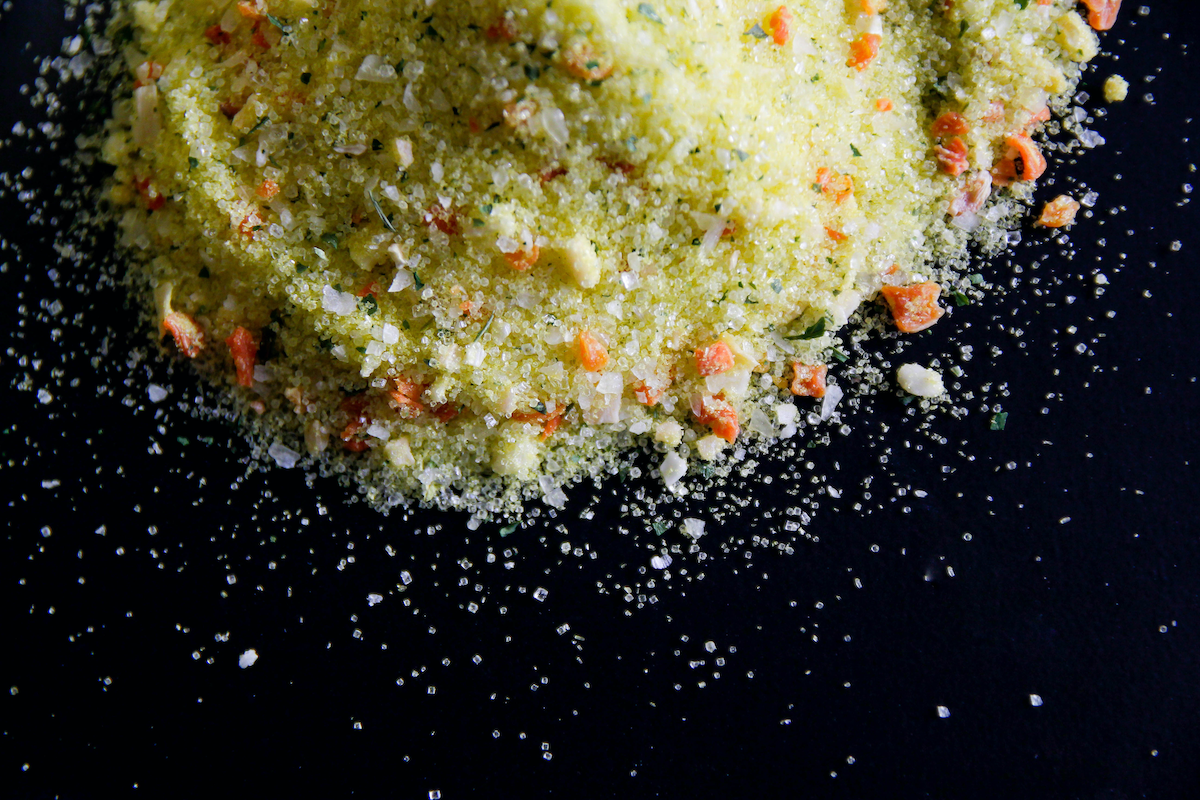Bouillon powder is your pantry’s new secret weapon

Have you ever known the acute panic that comes from calling your favorite takeout place only to learn the line has been disconnected? Faced with the prospect of never tasting the world’s best—that’s right, best—chicken shawarma ever again, you may slip into denial, as I did. Maybe you drive by the shuttered storefront a few times, desperate for signage indicating this is only temporary. Then you begin ordering shawarma after shawarma, hoping someone else miraculously makes it exactly the same—garlicky, redolent of lemon and warming turmeric, and unmistakably chickeny.
Eventually, you have to move on, or, in my case, get in the kitchen and tinker until your weekly shawarma injection is restored. After several unsuccessful trials and far too much time spent scouring the internet for shawarma variations, I stumbled across chef and cookbook author Molly Yeh’s recipe for chicken shawarma tacos, which called for a sprinkling of that vintage pantry denizen: bouillon powder.
Bouillon powder is sort of unfashionable these days. Bone broth is in, long-simmered homemade stock is in, while manufactured bouillon cubes are decidedly out. But if you are searching for that elusive super-chickeny chicken flavor, reconsider. After marinating chicken breast slices for half a day in garlic, onion, olive oil, lemon juice, turmeric, chile flakes, a touch of cinnamon and a few shakes of the good stuff, I eased them into the cast iron skillet for a quick sear. I stole an impatient bite right from the pan, and there it was once more: The unmistakable umami that only comes from ground-up dried chicken seasoned with salt and spices. It wasn’t an exact replica of my beloved takeout version, but close enough to satisfy me within the realm of reasonable sodium consumption.
Since reacquainting with my old friend bouillon, I’ve begun sprinkling dashes of it into my paella, egg-and-vegetable stir-fries, and almost every soup and stew. I dust it over simmered roasted green chiles, which I cap with blistered asadero cheese for a Borderlands-style chile con queso. Bouillon also makes roasted potatoes sing and lends a lovely, secret umami note to biscuits when subbed in for some of the salt. The same holds true for drinking snacks like roasted nuts or popcorn, by the way.
“It’s like the Lipton Onion Soup flavoring, it’s just really, really good,” says Israeli-born restaurateur and chef Michael Solomonov, of Philadelphia restaurants including Zahav and Abe Fisher. “Osem Chicken Consomme is widely used in Israel today, and it’s a holdover from the food rationing that started in the 1940s, (when) it was used as a substitute for chicken stock in staple recipes like matzo ball soup.”
Solomonov even commissioned New York spice shop La Boîte to make a custom bouillon blend, which he used in the matzo ball soup served at his now-closed charity-minded restaurant Rooster Soup Co. To this day, Israelis use bouillon to punch up everything from casseroles to chopped liver, kugel and hummus.
While we’re on the subject, Michele Casadei Massari, executive chef and owner of Lucciola in New York City, would like to dispel the myth that Italians only cook with real meat stock.
“Chicken bouillon powder is the key to many traditional Italian recipes,” he says. When Massari makes risotto at the restaurant and at home, he simmers a pinch of chicken bouillon powder with white wine until reduced to deepen the dish’s slow-cooked flavors. He also adds it to the dry herb blend of thyme, chile flakes and dry onion flakes that flavors his arrabbiata pasta sauce. He likes to thin his spicy tomato sauce with water, then cook the pasta right there in one pot for a cozy, warming weeknight dinner.
The invention of the bouillon cube as we know it occurred around the turn of the last century in Europe, as the food companies Maggi, OXO, and Knorr took turns innovating their way toward inexpensive portable soups by concentrating beef solids into extracts. Yet people have been making flavor concentrates out of dried meat, salt and spices—aka the precursors to Cup-o-Soup—all over the world for thousands of years, from the Americas to Eastern Europe. It’s easy to see why: Name me a culture in which soup and stock haven’t played a crucial role as a sustaining and economic meal.
You don’t need meat to make bouillon, of course. A recent edition of my weekly 101 Cookbooks email from veg-focused food blogger, photographer and cookbook author Heidi Swanson—who’s lately been big into just-add-water meals in jars—offered up a homespun, vegan alternative featuring nutritional yeast, onion powder, coconut milk powder and nostalgic dried oregano and thyme.
Does all this mean #bouillon is trending once more? I prefer to think it never left us. It was just waiting in the back of our pantries, frozen in infinite preservation, wondering when we’d remember that after centuries, it still holds the key to savory je ne sai quois.

